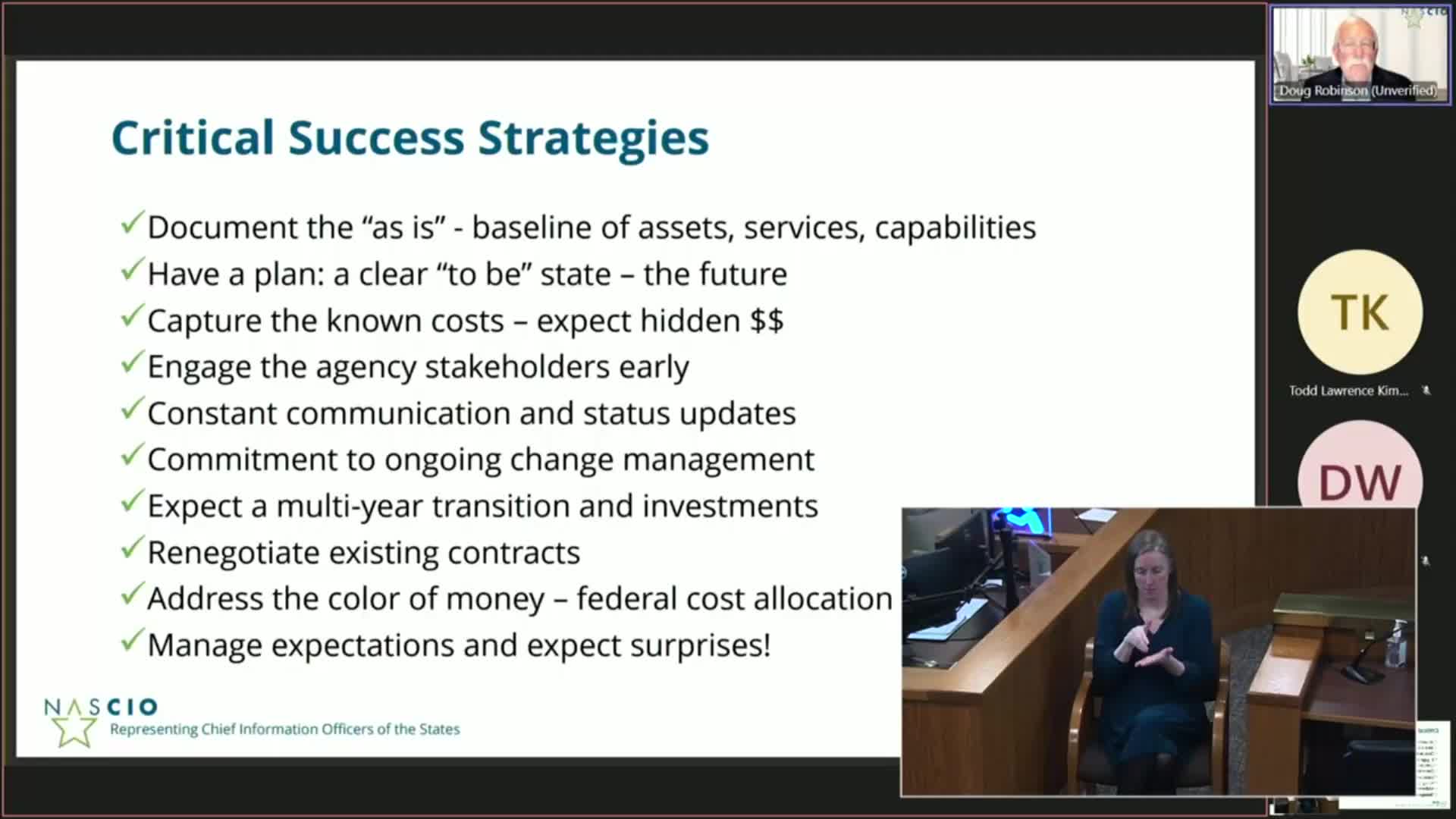Gartner's Todd Kimbrell discusses IT centralization challenges for Oregon government
March 07, 2025 | Information Management and Technology, Joint, Committees, Legislative, Oregon
This article was created by AI summarizing key points discussed. AI makes mistakes, so for full details and context, please refer to the video of the full meeting. Please report any errors so we can fix them. Report an error »

In a recent meeting of the Joint Committee on Information Management and Technology, members of the Oregon State Legislature engaged in a comprehensive discussion about the future of state IT infrastructure. The meeting featured insights from Todd Kimbrell, a vice president and analyst from Gartner, who emphasized the complexities and implications of transitioning between centralized, decentralized, and hybrid IT models.
Kimbrell highlighted that the decision to shift from one IT structure to another is not only significant but also fraught with challenges. He likened the process to home plumbing—often unnoticed until it fails, yet crucial for effective service delivery. This analogy underscores the importance of investing in IT infrastructure, which, while sometimes invisible, is essential for the state's operations.
The committee explored the characteristics of different IT models. A centralized model, often seen as more efficient and accountable, allows for streamlined governance and oversight across state agencies. In contrast, a decentralized model, which Oregon currently employs, can lead to fragmented IT services and budget discussions across numerous agencies. Kimbrell noted that this fragmentation complicates legislative budgeting, as each agency operates independently, making it difficult to prioritize technology investments.
Kimbrell also pointed out that Oregon's growing population places additional demands on IT services, necessitating a careful evaluation of how technology can best support constituents' needs. He urged the committee to consider the unique context of Oregon's governance structure and the potential benefits of adopting a more centralized approach, which could enhance accountability, cybersecurity, and cost efficiency.
The discussion also touched on the importance of aligning IT strategies with constituent priorities, particularly in a post-pandemic landscape where service accountability and ease of access to government services are increasingly demanded. Kimbrell emphasized that any shift in IT strategy should be guided by clear objectives and a thorough understanding of current technology capabilities.
As the committee continues to deliberate on these critical issues, the insights shared during this meeting will play a pivotal role in shaping Oregon's IT landscape. The path forward will require careful consideration of the trade-offs between different IT models, the implications for service delivery, and the overarching goal of meeting the needs of Oregon's residents effectively.
Kimbrell highlighted that the decision to shift from one IT structure to another is not only significant but also fraught with challenges. He likened the process to home plumbing—often unnoticed until it fails, yet crucial for effective service delivery. This analogy underscores the importance of investing in IT infrastructure, which, while sometimes invisible, is essential for the state's operations.
The committee explored the characteristics of different IT models. A centralized model, often seen as more efficient and accountable, allows for streamlined governance and oversight across state agencies. In contrast, a decentralized model, which Oregon currently employs, can lead to fragmented IT services and budget discussions across numerous agencies. Kimbrell noted that this fragmentation complicates legislative budgeting, as each agency operates independently, making it difficult to prioritize technology investments.
Kimbrell also pointed out that Oregon's growing population places additional demands on IT services, necessitating a careful evaluation of how technology can best support constituents' needs. He urged the committee to consider the unique context of Oregon's governance structure and the potential benefits of adopting a more centralized approach, which could enhance accountability, cybersecurity, and cost efficiency.
The discussion also touched on the importance of aligning IT strategies with constituent priorities, particularly in a post-pandemic landscape where service accountability and ease of access to government services are increasingly demanded. Kimbrell emphasized that any shift in IT strategy should be guided by clear objectives and a thorough understanding of current technology capabilities.
As the committee continues to deliberate on these critical issues, the insights shared during this meeting will play a pivotal role in shaping Oregon's IT landscape. The path forward will require careful consideration of the trade-offs between different IT models, the implications for service delivery, and the overarching goal of meeting the needs of Oregon's residents effectively.
View full meeting
This article is based on a recent meeting—watch the full video and explore the complete transcript for deeper insights into the discussion.
View full meeting
